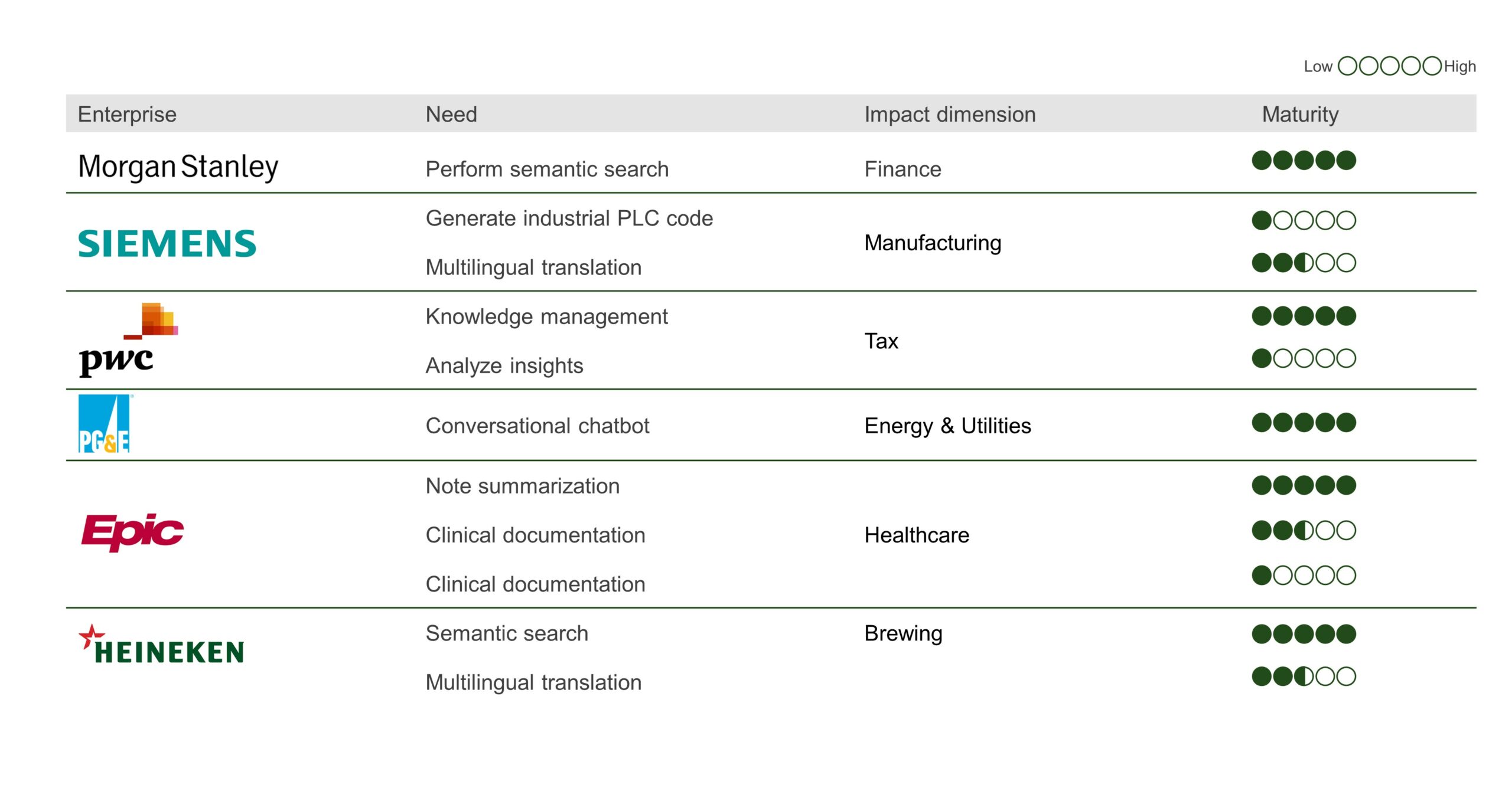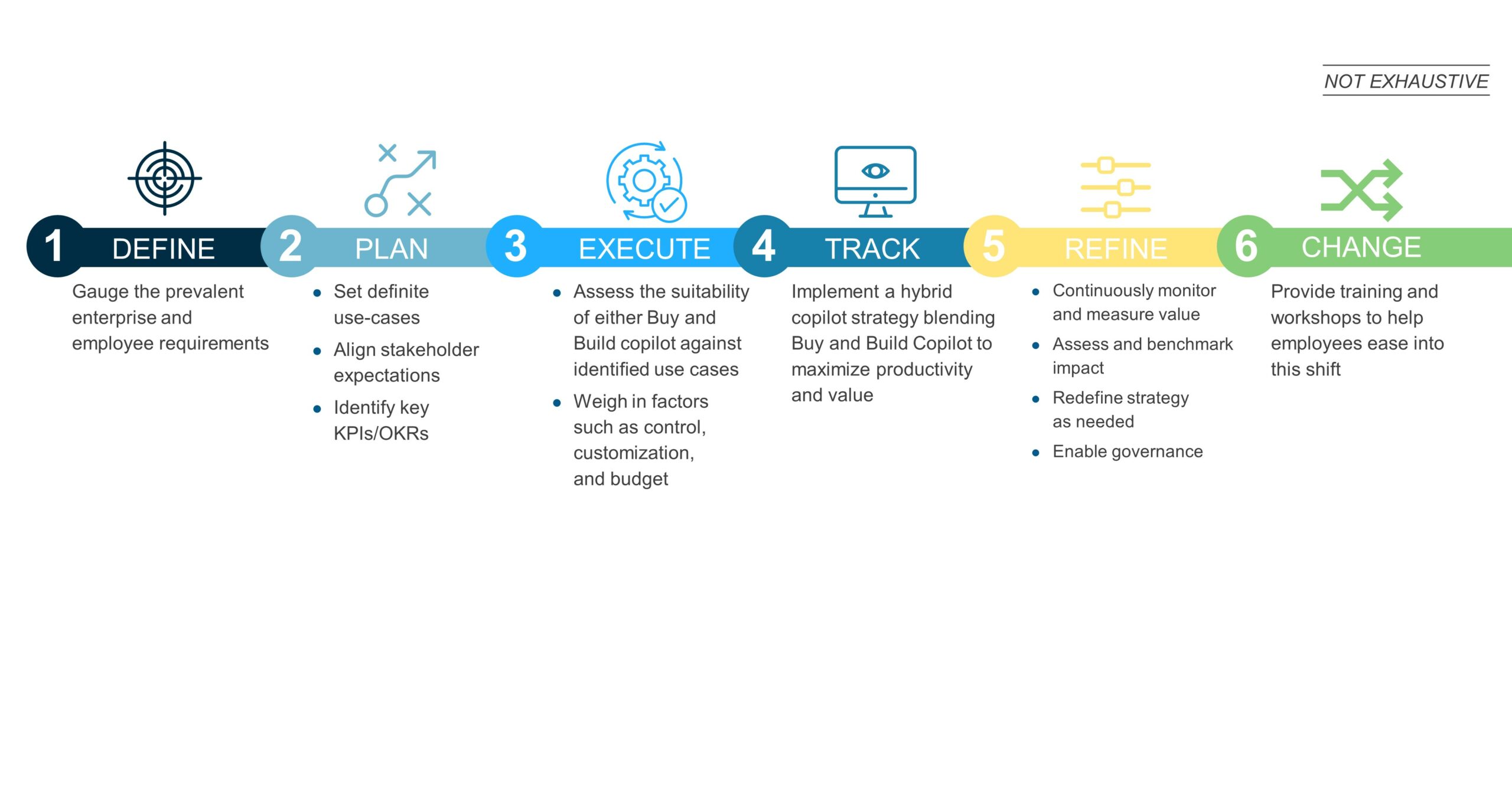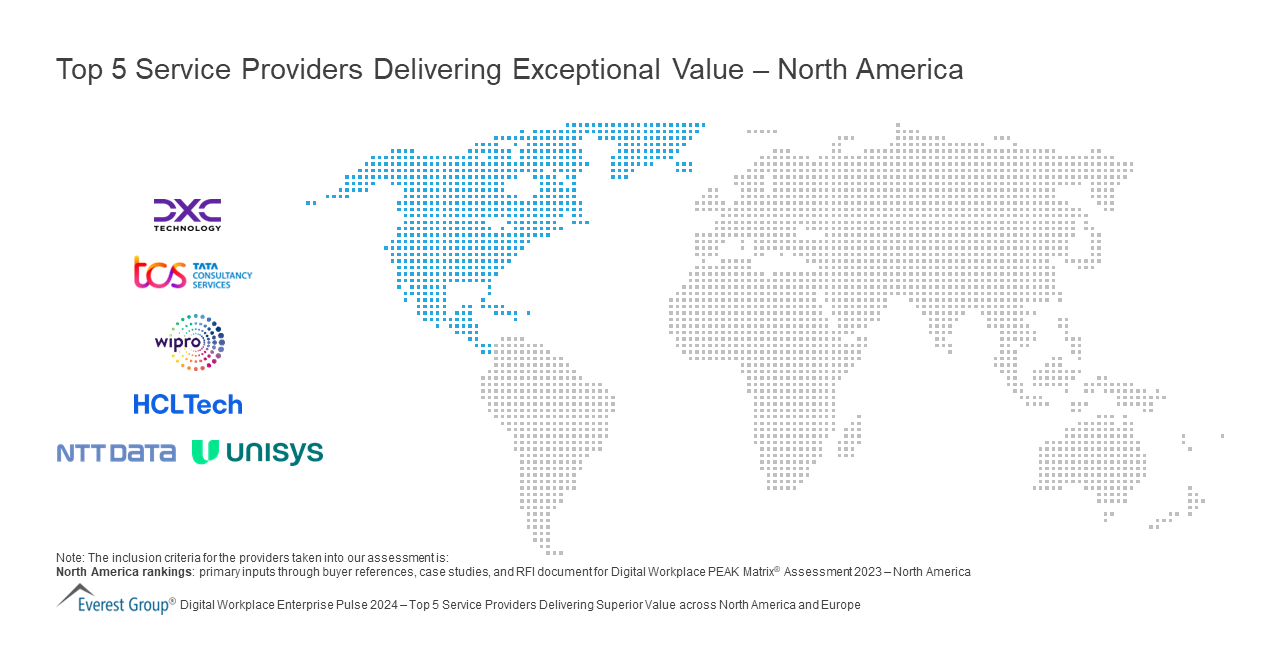Catch Krishna Charan, Vice President at Everest Group, during this LinkedIn Live session to discover insights into building a sustainable talent strategy. They will discuss how by maximizing resources, organizations can successfully navigate through periods of lull in demand.
I am coming to the conclusion that the hoped-for gen AI spending wave for both tech and tech services could be longer in developing than both the investors and companies are planning on. In a recent blog, I talked about the realization that most (perhaps as high as or above 90%) of the Proof of Concept (POC) initiatives that launched during 2023 will not make it to production in 2024. Yet, the tech firms are plowing hundreds of millions of dollars into building AI tools and building the capabilities for running them. What has changed? And where are there still opportunities for this important technology?
The global spend on AI is soaring as enterprises across diverse sectors increasingly tap into its transformative potential. With the emergence of generative AI / Large Language Models (LLMs), enterprises worldwide are swiftly adopting AI to unlock new revenue streams, reduce operating costs, enhance user experiences, and gain significant industry differentiation. However, at the core of AI development lies the need for large training datasets, a challenge met by Data Annotation and Labeling (DAL) services.
However, managing DAL capabilities in-house appears to be costly, time-intensive, and resource-draining for enterprises. As a result, businesses are outsourcing DAL solutions to external providers. In their quest, enterprises seek partners capable of accelerating their time-to-market with annotation projects delivered at scale and speed without compromising data quality. They prioritize providers that emphasize relationship-building, cost-effectiveness, agility, and a steadfast commitment to deliver tangible business impact and RoI throughout their transformation journey. Equipped with trained workers and robust annotation platforms, these providers efficiently guide enterprises through the DAL landscape.

In this report, we examine:
Scope
The PEAK Matrix® provides an objective, data-driven assessment of service and technology providers based on their overall capability and market impact across different global services markets, classifying them into three categories: Leaders, Major Contenders, and Aspirants.
“We are the Copilot company; we believe in a future where there will be a Copilot for everyone and everything you do.” – Satya Nadella, CEO Microsoft
A hybrid Copilot strategy delivers the benefits of purchasing ready-made Copilots and developing custom solutions. Discover a six-step roadmap for devising a successful hybrid Copilot strategy and compare buying versus building in part two of our blog series.
Read our previous blog to explore the emerging Copilot trend, M365 Copilot opportunities for service providers and enterprises, and why a hybrid strategy represents the future for Copilot. Reach out to us to discuss more in depth.
Hybrid Copilot is an innovative approach that seamlessly blends out-of-the-box offerings procured directly from vendors (Buy Copilots) and customized solutions built by the user with native tools or no-code/low-code platforms such as Microsoft Copilot Studio, Azure Open AI Service, Google Vertex AI, Open AI GPT Builder, AWS PartyRock, and others (Build Copilots). This synergy empowers enterprises to overcome the limitations of purchasing or developing, unlocking unprecedented potential within their environments.
While the traction for out-of-the-box Copilots like M365 Copilot is palpable, enterprises are increasingly recognizing the value of building Copilots. A shift is underway with more customers developing Copilots rather than defaulting to M365 Copilot.
The exhibit below summarizes the rising momentum for Build Copilots among enterprises in various sectors, signaling a growing demand for custom solutions tailored to unique requirements.

In two months, more than 10,000 organizations have used Copilot Studio to either tailor Copilot for Microsoft 365 or create their own custom Copilots, Microsoft announced in its second quarter earnings call.
The exhibit below captures the differences between the two approaches:

In navigating the Copilot landscape, enterprises find themselves at a critical juncture where the choice between buying and building carries profound implications. Let’s look at the pros of each:
Economies of scale also come into play. While the upfront investment might be higher, the total cost of ownership (TCO) decreases as the adoption of custom solutions scales. Conversely, pursuing a Buy Copilot strategy may lead to constant TCO increases due to ongoing licensing fees and dependencies on external vendors.
In charting the course forward, enterprises must strike a delicate balance between buying and building Copilots.

The following six-step roadmap outlines a path to craft a successful Copilot strategy:
The roadmap for a hybrid Copilot strategy empowers enterprises to leverage the best of both worlds, harnessing the rapid deployment and diverse functionalities of Buy Copilots while capitalizing on the customization and integration flexibility Build Copilots offer.
By strategically aligning with organizational needs and continuously optimizing, enterprises can confidently navigate the Copilot landscape, driving innovation, efficiency, and success.
Everest Group will continue to follow development in this space. To discuss, contact [email protected] and [email protected], or share your views at [email protected].
Watch the webinar, Global Services Lessons Learned in 2023 and Top Trends to Know for 2024, to learn the latest on delivery locations, sourcing strategies, deal trends, talent strategy, and cost optimization strategy.
Mid-tier IT firms are able to sustain their client base in a tough economic environment, and are not losing out to the vendor consolidation that usually kicks up during a slowdown in the IT sector. Experts are of the opinion that once demand comes back, mid-tier IT firms will be the first ones to see growth revival on the back of a higher number of digital deals.
“There are some early indications that we may start to see some level of recovery in the late second quarter and building after that. Much depends on the greater macro environment and if the soft landing of the economy happens,” Peter Bendor Samuel, CEO of Everest Group, told Bizz Buzz.
The Philippines sees generative AI as a game-changer for its booming information technology and business process management (IT-BPM) industry but acknowledges the need to upskill its workforce to adapt. The IT & Business Process Association of the Philippines (IBPAP) prioritizes proactive upskilling and reskilling for its workforce.
The association also plans to revisit its 2028 roadmap targets with research partner Everest Group to account for the evolving landscape.
The Information Technology & Business Process Association (IBPAP) is updating its 2028 industry roadmap to align its goals with the ongoing expansion of the artificial intelligence (AI) landscape.
IBPAP, in a statement, said it is collaborating with leading research firm Everest Group in refreshing the industry roadmap and introducing an ambitious version for 2028.
Service Providers

Service Providers


©2023 Everest Global, Inc. Privacy Notice Terms of Use Do Not Sell My Information
"*" indicates required fields